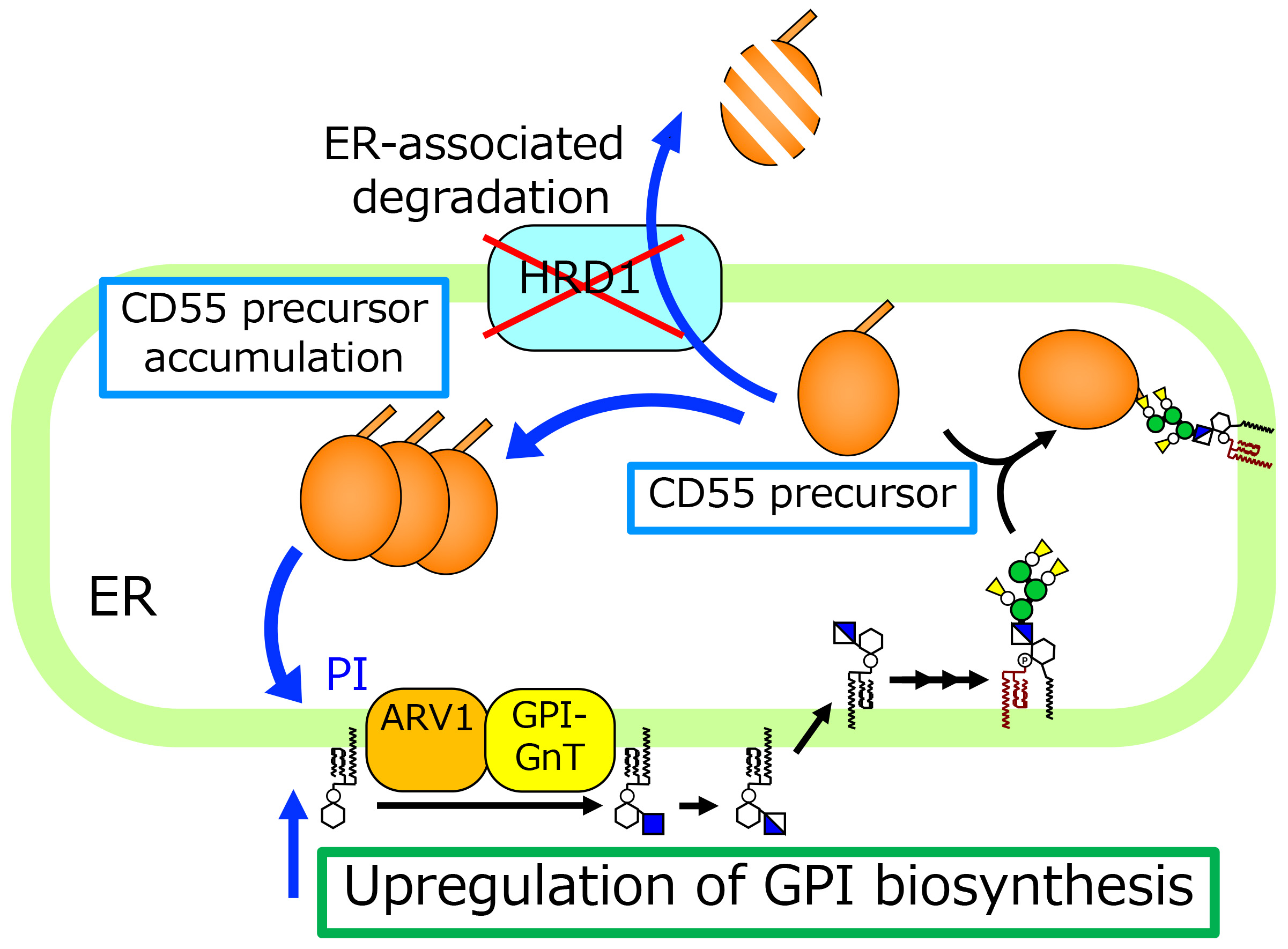Elucidating the Regulatory Mechanisms for the Biosynthesis of Glycosylphosphatidylinositol (Kinoshita Lab, in J. Cell Biol.)
A research group led by Professor Taroh Kinoshita of the Research Institute for Microbial Diseases (RIMD) at Osaka University, Professor Morihisa Fujita of the Institute for Glyco-core Research (iGCORE) at Gifu University, and Assistant Professor Yi-Shi Liu of the School of Biotechnology at Jiangnan University, has elucidated a new mechanism that regulates the biosynthesis of glycosylphosphatidylinositol (GPI).
Key points
- Deficiency of endoplasmic reticulum-associated degradation increases the biosynthesis of glycosylphosphatidylinositol (GPI).
- CD55 and ARV1 are identified as factors required for the increase in GPI biosynthesis.
- Accumulated precursor forms of specific GPI-anchored proteins are responsible for the upregulation of the GPI biosynthesis.
GPI-anchoring of proteins is a conserved posttranslational modification among eukaryotes. In humans, more than 150 proteins, including receptors, cell adhesion factors, hydrolytic enzymes, and prion proteins, are modified by GPI. Each cell would regulate the amount of GPI as needed, but it was unclear how GPI biosynthesis is regulated. The research group found that GPI biosynthesis is elevated when endoplasmic reticulum (ER)-associated degradation (ERAD) is defective. A genome-wide screen identified that CD55 and ARV1 are involved in the elevated GPI biosynthesis. CD55 is a GPI-anchored protein (GPI-AP) expressed in a wide range of tissues and cells. Abnormalities in GPI transfer to proteins and loss of ERAD cause the accumulation of the CD55 precursor with a GPI-attachment signal, which upregulates GPI biosynthesis. Of the 31 GPI-AP precursors examined, GPI-attachment signal peptides of only CD55, CD48, and PLET1 enhanced GPI biosynthesis. On the other hand, ARV1, an ER-localized membrane protein, was essential for the upregulation of GPI biosynthesis by the CD55 precursor. ARV1 forms a complex with the enzyme for the initial reaction of GPI biosynthesis and is likely to positively regulate GPI biosynthesis when needed.
These results reveal that cells have a unique mechanism to regulate GPI biosynthesis by sensing the accumulation of specific GPI-AP precursors. Further investigation into the regulatory mechanism of GPI biosynthesis will allow us to reveal the mechanism of inherited GPI deficiencies (IGDs) caused by partial defects in GPI biosynthesis, and to develop diagnostic and therapeutic methods.
The results were published in the Journal of Cell Biology on Feb 24, 2023.
Title: Accumulated precursors of specific GPI-anchored proteins upregulate GPI biosynthesis with ARV1
Authors: Yi-Shi Liu#, Yicheng Wang#, Xiaoman Zhou, Linpei Zhang, Ganglong Yang, Xiao-Dong Gao, Yoshiko Murakami, Morihisa Fujita* and Taroh Kinoshita*(#: 1st Authors、*: Corresponding Authors)
Links
- Home
- Achievement
- Research Activities
- Elucidating the Regulatory Mechanisms for the Biosynthesis of Glycosylphosphatidylinositol (Kinoshita Lab, in J. Cell Biol.)








